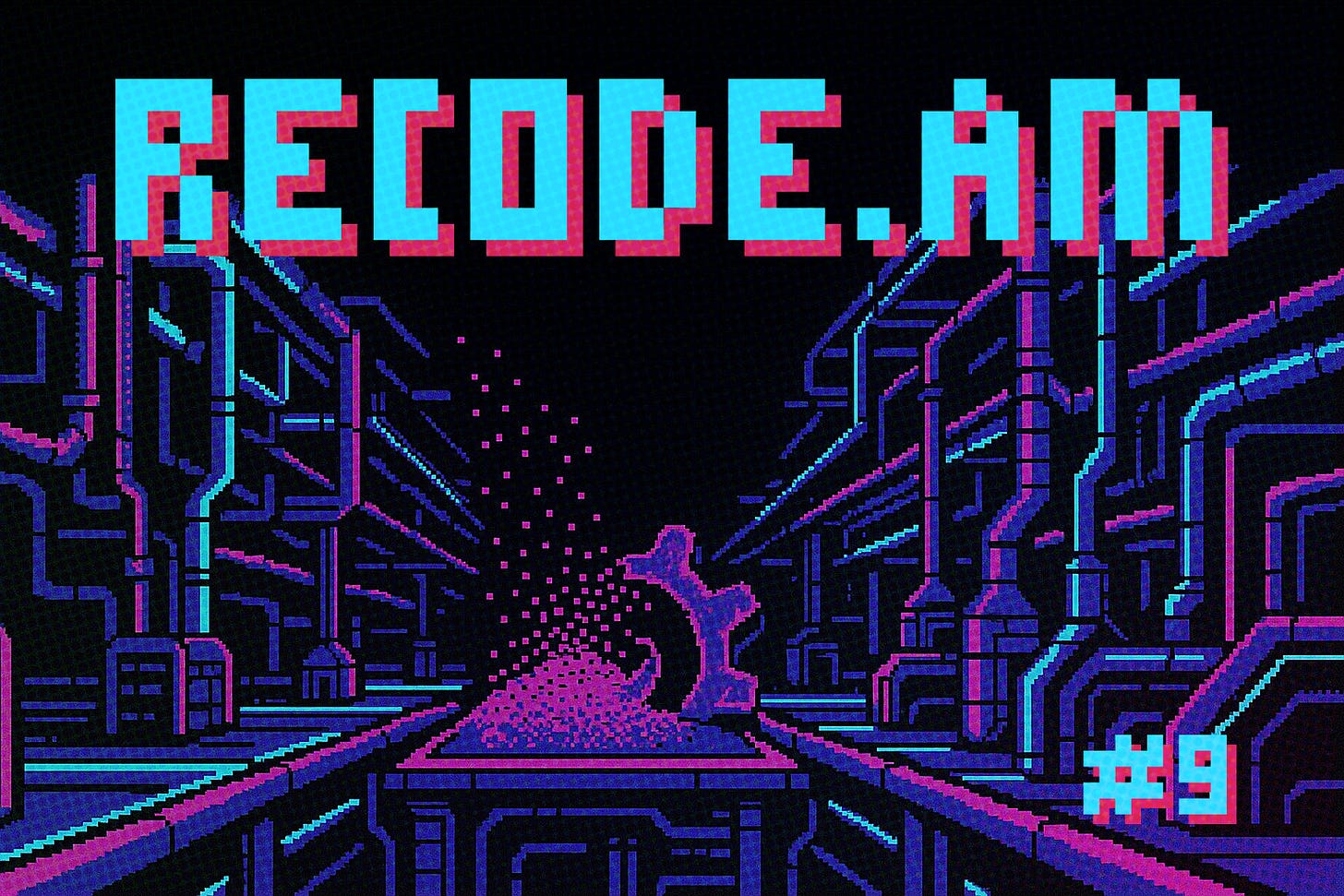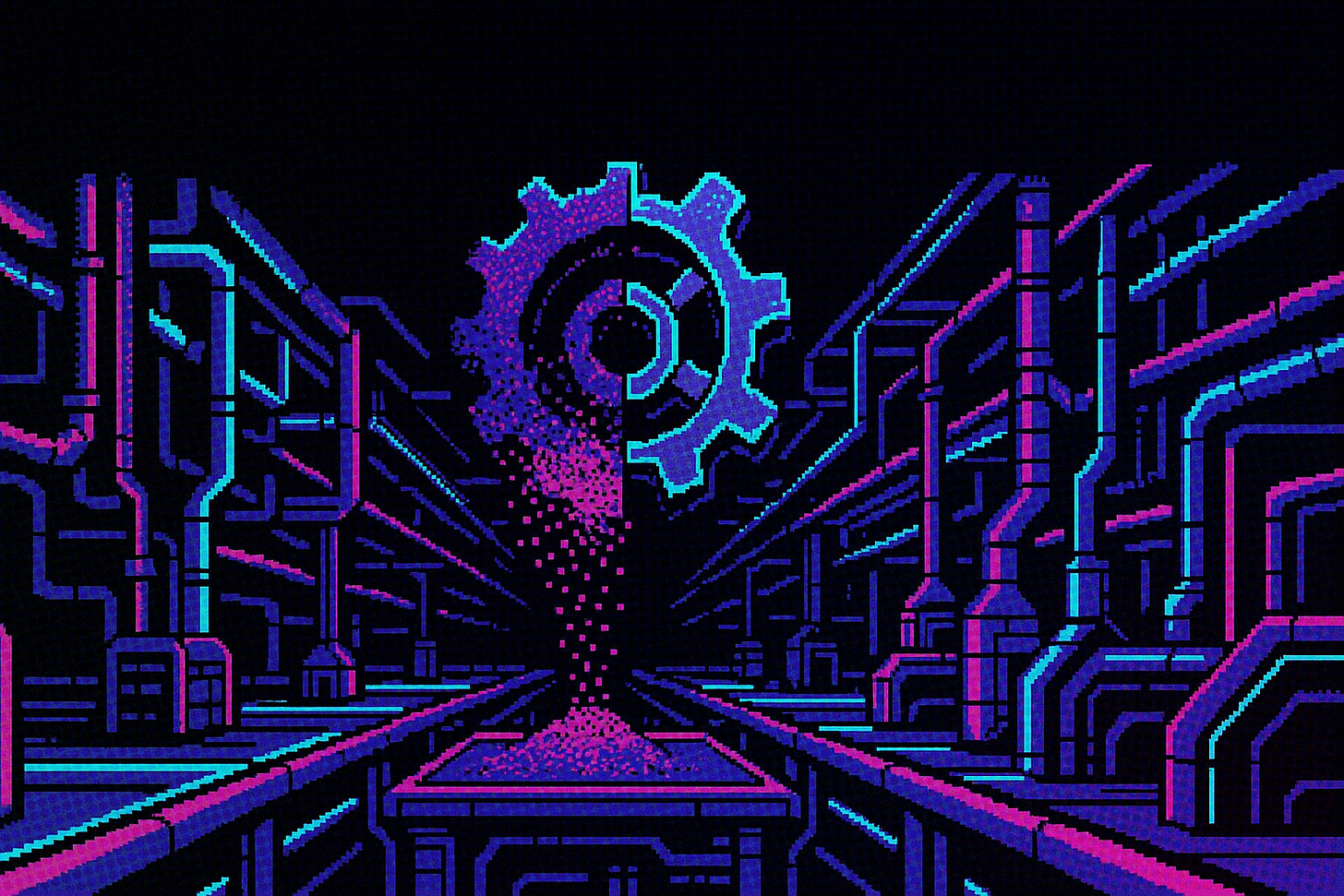The metal binder jetting fiasco – and can better software fix it?
RECODE.AM #9
As you already know, Desktop Metal has officially declared bankruptcy. Nano Dimension—the owner of its decaying remnants—has announced that it will try to get rid of everything that still holds any value. There's a real chance that this could help save, for example, the excellent sand casting business of ExOne's German division.
But saving metal binder jetting seems rather unlikely—at least not in the Desktop Metal version...
This means there’s a strong likelihood that the flagship manufacturing method of the former unicorn will disappear from the market—and if it does return, it will likely be in a new form under a completely different banner.
Because it's an open secret that HP is no longer actively developing its own version of metal 3D printing, and Colibrium Additive is being quite reserved when it comes to announcing breakthroughs in this field. I’m not suggesting anything—just repeating what people are saying.
So, does this mean the end of metal binder jetting? Could the technique be reborn in another form?
To answer these questions, we need to understand exactly how this process works, and where its strengths and weaknesses lie. We’ll discover that the key to solving the problem is—no surprise—software.
A quick reminder—how does binder jetting work?
This process is based on the deposition of thin layers of powdered metallic material, which are selectively bonded using a liquid binder in areas corresponding to the cross-section of a digital 3D model.
An inkjet printhead precisely deposits droplets of binder, “printing” each layer sequentially. After one layer is completed, the build platform lowers by the layer's thickness and the next layer of powder is spread over it.
This produces what is called a “green part”—a part made of powder held together by binder, but not yet fully solid.
Excess loose powder is removed, and the green part then goes through debinding and sintering processes.
The origins of metal binder jetting date back to 1995, when the American company Extrude Hone began working on the development of 3D printing with metal. In 1998, the company introduced the first commercial 3D metal printer, using binder jetting technology developed at MIT.
The ProMetal RTS-300 system deposited binder onto a metal powder bed, creating so-called “green parts” that were then debound and sintered.
In 2005, Extrude Hone’s founder, Larry Rhoades, saw the enormous potential of binder jetting technology and sold the company to Kennametal—a global supplier of industrial tools and materials—while transferring the 3D printing assets to a newly formed company: The Ex One Company, LLC.
And so ExOne was born. In 2013, the company went public on the U.S. stock exchange, and was eventually acquired by Desktop Metal.
Advantages and disadvantages of metal binder jetting
The advantages of binder jetting include fast print speeds and the fact that the process doesn’t require a high-power heat source or laser. Additionally, the technology offers great flexibility in material selection—powders of virtually any chemical composition and particle shape can be used, as long as the packing density and binder viscosity are optimized.
Another advantage is material efficiency—unused powder can be recycled and reused multiple times, lowering operating costs.
However, the technology also faces significant limitations, especially regarding dimensional control and sintered part uniformity. Because green parts are only loosely held together by the binder, significant, unpredictable shrinkage can occur during debinding and sintering—sometimes exceeding several percent linearly.
In a recent LinkedIn discussion about Desktop Metal, Suman Das—one of the world’s leading authorities in the AM industry—pointed out that traditional powder metallurgy involves pressing and consolidating the material before sintering, which allows for precise control of deformation and shrinkage.
Binder jetting, on the other hand, relies on spreading powder without pre-consolidation, making shrinkage and distortion far less controllable.
As a result, final parts may suffer from unacceptable dimensional deviations and inhomogeneous microstructures, leading to unpredictable mechanical properties.
Ultimately, it turns out that this technology has a lot of limitations, and many details are simply impossible to manufacture due to shrinkage issues (especially thin walls placed near each other or holes).
Designers had to anticipate a huge number of variables before sending a part for 3D printing, which also required significant computational power.
In metal binder jetting, software is key
When it comes to metal binder jetting, software lies at the heart of the challenge. It plays the most critical role in determining the success of the process—capable of predicting and compensating for shrinkage, while simultaneously optimizing printing parameters and the sintering schedule.
Traditional CAD/CAM systems do offer dimensional compensation features, but they are insufficient when dealing with shrinkage rates exceeding a few percent.
To develop modern software dedicated to metal binder jetting, advanced numerical models are required—capable of simulating the full thermomechanical cycle, from room temperature through binder debinding all the way to peak sintering temperatures.
These models must account not only for the mechanical and thermal properties of the powder and the binder as it aggregates, but also interactions with potential supports, and the cooling phase’s effect on microstructure.
It is essential to implement non-Newtonian finite element (FEA) methods, combining fluid flow analysis (for the binder debinding and infiltration phases) with plastic and rheological analysis of the powder.
Nearly half of the software-related challenges are associated with predicting deformations caused by limited thermal control during debinding and sintering.
The software must work with multi-layer element meshes, where each layer has unique thermal and mechanical properties, depending on the binder saturation and packing density.
It should consider dynamic geometry changes resulting from phase-related shrinkage and changes in the physical state of the binder. Additionally, there’s the complex modeling of debinding, where narrow channels between particles play a key role in gas migration—and rapid evacuation is critical to minimizing internal stress and microcracking.
Finally, the software must integrate a process parameter optimization module, which learns from real-time sensor data—including temperature, pressure, and deformation.
Challenges in Realization
There are many obstacles to achieving such advanced functionality:
lack of comprehensive material data for powders in the partially bound phase
difficulty in measuring the real distribution of particles and binder inside a green part
limited computational power for high-resolution FEA simulations
challenges in model calibration using lab experiments that rarely reproduce industrial-scale conditions.
Another barrier lies in integrating simulation results with the printer itself, enabling real-time adjustment of printhead paths and layering parameters based on predicted deformations. Without seamless communication between CAD, FEA, and machine control modules, the process becomes rigid, increasing part rejection instead of boosting efficiency.
To make binder jetting software truly effective, it must include:
advanced simulation tools for thermomechanical deformation
adaptive process control modules
a material database for various metal powders, with complete thermal, mechanical, and rheological parameters
a robust numerical calibration system based on experimental data
The software should also account for debinding effects on microstructure and be able to predict operational costs at every stage—from printing the green part to the final sintered component.
Only then can the core limitations of binder jetting be overcome, enabling repeatability and quality of sintered parts at a level acceptable in real-world industrial manufacturing.
In reality, everything should begin with basic part identification, generating a report on whether a part is even suitable for 3D printing using this technology. A smart idea might be to introduce a grading system, evaluating how much quality compromise is acceptable to make the part manufacturable.
Could AI be the solution?
Certainly. If someone were to tackle this with a properly motivated team and a real budget, it could lead to significant innovation.
But the real question is: is it all worth it?
Does metal binder jetting truly have a realistic chance of becoming a large-scale, valuable production method—one that would justify the cost of developing a highly complex AI system capable of taking over full responsibility for the part production process?
At the moment, the outlook isn’t very optimistic.
But who knows…?





Great depth article.
I think it's worth noting that the shrinkage and distortion problems of binder jetting was completely solved by Ex One using their bronze infiltration postprocess.
This enabled thin and undercut parts extraordinarily well, at the cost of an extra phase requiring additional time, material, equipment, and skilled operators. Ex One held its pricing artificially low for many years in hopes that its excellent shape handling would find a use, but it never had much industrial uptake. My best guess is that this was because the resulting composite metal was neither steel nor bronze, with oddball metallurgical properties. On the consumer side artists and designers found the material very attractive; it could be patinated similarly to art bronze and it was wildly popular at old Shapeways, but that doesn't fund equipment or research.
Prior to its acquisition by Desktop Metal, Ex One hived off its service bureau facility to FreeFORM Technologies, which continued to do bronze infiltration for some time, direct to user and as the steel-printing back end for old Shapeways, Sculpteo, i.Materialise, Xometry, etc. However, the highly skilled people who had been with Ex One during the development of this process retired or were shed during the various acquisitions, and some of the range of the process was lost with them, in particular the ability to print larger complex parts.
Last spring FreeFORM discontinued the bronze infiltration process, continuing only classic binder jetting with sinter to full density, and I believe infiltration is now extinct. All service bureaus I know of that offered it, cancelled it when FreeFORM did.
Though it was invented over 20 years ago, no surviving metal printing method comes close to what this process could do. Arguably it should have set the standard for what metal printing can be, and as it was it enabled a large body of creative art and design work, including my own sculpture career. But it seems there was no industrial use case, so the market has spoken.
I write to note that whether or not binder jetting as a whole survives, this subtype had a large cultural impact outside the industry and was an exciting part of the popularization of 3D printing. And I hope it won't be forgotten that there was at least one way to get much better results from binder jetting.
Great coverage Pawel.
My read of the situation is that we change era in Metal Binder Jetting and in AM in general. This is illustrated by multiple signals in the industry. Consolidation, profitability expectations, raising money not easy anymore, moving from prototyping to production, are the new market conditions.
New rules in the games means also new profile of players. The era of over promising startups is maybe behind us at least for the segment of serial production machines.
DM situation is not a good news for the Metal Binder Jetting market we can agree on this. But we could also see it as an opportunity for Colibrium, HP or ExOne, (different company profile, culture and way to address the challenges) to take the lead and deliver in this business. Solutions for serial production in AM is not about hype or hyper growth, it takes time for customers and industries to qualify materials, applications and processes. I think that there is a great future for MBJ simply because this is the most productive and cost effective solution in the AM industry. Success requires to meet customers requirements and industry standards to deliver end use parts at scale.